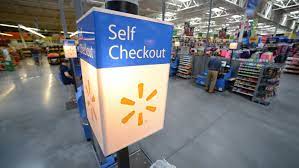As retailers like Kroger and Aldi embrace the self-checkout trend, shoppers find themselves divided over the shift from traditional to digitized checkout processes. Kroger, in a bold move, replaced all traditional registers with self-checkout machines in a Franklin, Tennessee store. While some customers appreciate the speedy service, others express frustration and urge a return to more cashier-staffed options. Aldi faces similar sentiments, with concerns about job implications. Despite the divide, a study by VideoMining indicates that US grocery shoppers are increasingly opting for self-checkout, with transactions reaching 55% of all grocery sales, up from 48% in 2021.

Shopper Frustrations at Kroger
Kroger’s nationwide adoption of self-checkout lanes sparks frustration among shoppers, leading to calls for a return to traditional cashier-staffed registers. One customer suggests a compromise, urging Kroger to either revert to cashiers or lower prices to accommodate the self-checkout model.
The shift to self-checkout is not unique to Kroger, as Aldi also implements the digital checkout process. However, concerns arise about potential job losses and the impact on communities. Aldi attempts to reassure customers, stating that the self-checkout lanes are optional and that no jobs were lost due to this implementation.
A study by VideoMining reveals that US grocery shoppers are increasingly leaning towards self-checkout, with transactions accounting for 55% of all grocery sales. This shift challenges traditional views, indicating a preference for the convenience and efficiency that self-checkout offers.
READ ALSO: Cartoon Cash Chronicles: Animated Tales of Wealth and Finance
Shopper Perspectives on Aldi’s Approach
Aldi’s adoption of self-checkout raises concerns among shoppers, particularly regarding job creation in economically challenged areas. One customer expresses disappointment and calls for Aldi to reconsider the change, emphasizing the potential role of the store as a job creator in impoverished cities.
Aldi responds to worries about job losses, assuring customers that the self-checkout lanes are meant for convenience and that no jobs were compromised. The store addresses the concerns and attempts to strike a balance between efficiency and job preservation.
In essence, the evolving landscape of self-checkout in grocery stores prompts a nuanced response from shoppers, highlighting both the convenience and challenges associated with this digital transformation.




